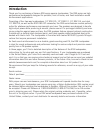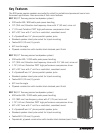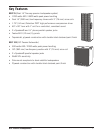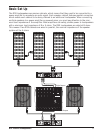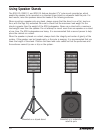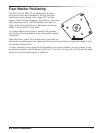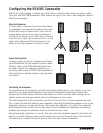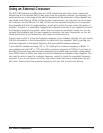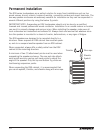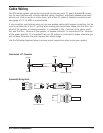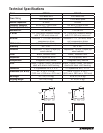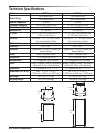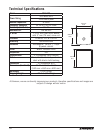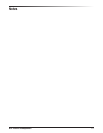
13RSX Passive Loudspeakers
Using an External Crossover
The RSX118S features an 6dB/octave at 150Hz internal low pass filter, which means that
frequencies will be reduced 6dB in level every time the frequency doubles. Consequently, fre-
quencies that are in the range of the satellite speakers will be produced by the subwoofer and
can create comb filtering. When configuring your sound system, you may want to use an exter-
nal crossover, like the Samson S 3-way, to fine tune the crossover frequency and incorporate
the subwoofer with the full-range speakers, as well as to match the room where the system is
installed. The goal is to seamlessly integrate the subwoofer with rest of your speakers to extend
the frequency range of your system, rather than to produce an unnatural, boomy mix. You do
not want the subwoofer and the main speaker to reproduce the same frequencies, as this will
create duplication of low frequencies, and create an imbalanced mix.
A good place to start is to use the frequency response of your speaker cabinets. You can usually
find this information in the documentation included with your speakers. Start by setting your
crossover frequency to the lowest frequency that your satellite speaker produces.
If your satellite speakers are large (12" or 15") start with a crossover frequency of 80Hz. If
your speakers are small (8” or 10”) start with a crossover frequency of 100Hz. If you have an
oscillator (there are many free oscillator smartphone and tablet apps available), slowly sweep
from 400Hz down to 40Hz, and listen to how the subwoofer and speakers blend together. You
may need to raise or lower the crossover frequency control to create the smoothest frequency
response. If you do not have an oscillator, use music tracks that have a steady bass line and
kick drum. Slowly adjust the crossover frequency until you find the optimum setting.



